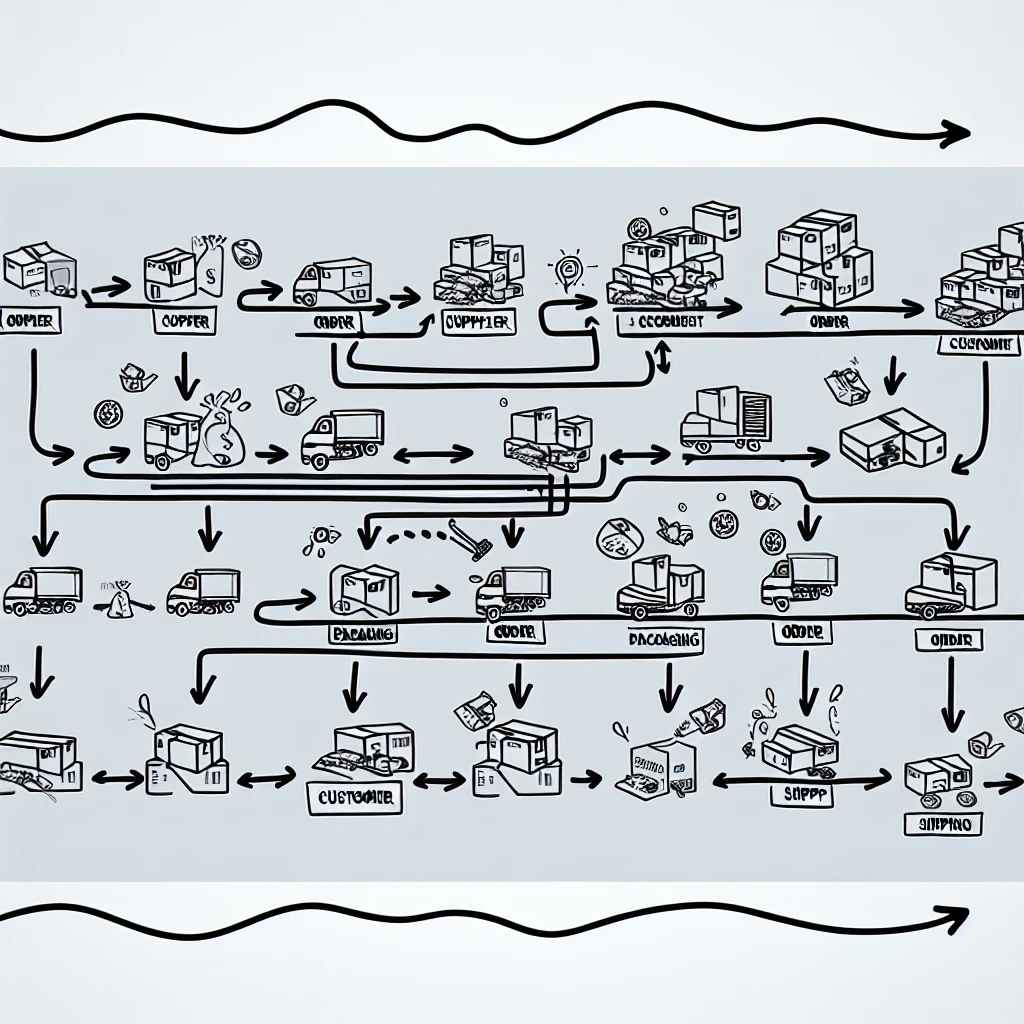Causes of Inventory Shrinkage
When it comes to the bustling world of ecommerce, inventory shrinkage is an unwelcome yet common phenomenon that can erode profit margins and disrupt the supply chain. At its core, inventory shrinkage refers to the discrepancy between the recorded inventory and the actual stock available. The causes of this shrinkage are multifaceted and can often be traced back to a handful of prevalent issues.
Firstly, let's talk about human error. It's an inevitable part of any business operation, but in the context of ecommerce, a simple miscount or a misplaced product can lead to significant inventory inaccuracies. This is especially true in businesses that still rely on manual processes for tracking stock levels. The margin for error increases, and so does the potential for shrinkage.
Theft is another major contributor to inventory loss. This isn't just about external shoplifting; internal theft by employees can be just as damaging, if not more so. With easy access to products and sometimes lax security measures, it's not uncommon for inventory to 'walk out the door' without a proper record.
Furthermore, damage and spoilage are also critical factors to consider. Products can get damaged during handling, storage, or transit, leading to unsellable stock that hits the books as shrinkage. Perishable goods face the additional challenge of spoilage, where time-sensitive products can expire before they're sold, contributing to the loss.
Let's not overlook the impact of fraudulent returns. In the digital shopping era, return fraud has become a sophisticated issue. Customers might return different items or those that have been used or damaged, causing discrepancies in inventory counts and quality.
Lastly, administrative and vendor fraud can't be ignored. Misleading paperwork, erroneous stock entries, or deliberate misreporting from suppliers can all lead to inventory shrinkage. It's a less talked about but equally significant cause that requires meticulous oversight.
Understanding these common causes of inventory shrinkage is the first step in combating the issue. By acknowledging the potential for loss at various points in the ecommerce supply chain, businesses can tailor their prevention strategies to be more effective, ensuring the longevity and profitability of their operations.
Effective Loss Prevention Techniques
Now, let's dive into the realm of effective loss prevention techniques to combat inventory shrinkage in ecommerce. It's not just about identifying the problems; it's about implementing strategic solutions that nip loss in the bud and keep your business thriving.
First and foremost, embracing technology is non-negotiable. Automated inventory management systems are a game-changer, reducing human error by keeping track of stock levels in real-time. These systems can alert you to discrepancies immediately, allowing for swift action. Plus, integrating RFID tags or barcode scanning can streamline inventory tracking and make the process virtually foolproof.
Another critical strategy is tightening internal controls. Regularly reviewing and updating your procedures ensures that employees are clear on their roles and responsibilities. Implementing checks and balances, like requiring managerial approval for certain actions, can deter internal theft and keep everyone accountable.
When it comes to theft, both internal and external, a robust security system is your best defense. Surveillance cameras, security tags, and alarm systems act as strong deterrents. But don't forget the power of employee training. Educating your staff on loss prevention techniques and the importance of vigilance can transform them into proactive guardians of your inventory.
Addressing product damage and spoilage requires a two-pronged approach: proper handling and timely turnover. Training staff on the correct way to handle and store items is essential. For perishable goods, implementing a first-expired-first-out (FEIFO) system ensures older stock is sold before it spoils, reducing waste and loss.
Combatting fraudulent returns starts with a clear and strict return policy. Require documentation for returns, track serial numbers, and inspect items carefully upon return. This can discourage fraudsters and help you quickly identify any issues with returned products.
Finally, to tackle administrative and vendor fraud, maintain a close relationship with your suppliers and conduct regular audits. Verify all documentation and cross-reference deliveries with purchase orders. Transparency and thoroughness in these relationships can prevent a multitude of sins.
By implementing these strategies, you can fortify your ecommerce business against inventory shrinkage. Remember, prevention is always better than the cure, and with these techniques, you'll not only prevent loss but also bolster the overall efficiency and reliability of your supply chain.
Conducting Stock Audits
Conducting stock audits is a critical component in the arsenal of strategies to combat inventory shrinkage. It's not just a matter of counting items; it's about a meticulous approach to ensuring that what's on the books matches what's on the shelves. But how do you conduct an effective stock audit that can detect and prevent inventory loss? Let's break it down.
First, schedule your audits regularly and unexpectedly. Predictable audits give room for manipulation, so keep the staff on their toes. Next, adopt a systematic approach. Whether it's a cycle count or a full inventory audit, having a structured process helps in covering all bases without missing a beat.
During the audit, be thorough. Check for discrepancies between the physical count and your inventory records. Investigate any variances immediately to determine if they're a result of theft, damage, or administrative errors. Use this opportunity to assess the condition of your stock as well. Damaged goods not only contribute to shrinkage but can also affect customer satisfaction.
Don't overlook the importance of involving different team members in the audit process. This not only fosters a sense of collective responsibility but also reduces the risk of internal theft. However, ensure that those conducting the audit are not the same individuals responsible for inventory management to maintain objectivity.
Technology can be a significant ally in stock audits. Utilize inventory management software to streamline the process and maintain accuracy. Scanners and mobile devices can speed up the counting process, while advanced software can analyze data trends to help you predict and prevent future shrinkage.
Lastly, follow up on the audit findings. Implement corrective actions for any identified issues and adjust your inventory management practices accordingly. Regular stock audits, combined with a proactive approach to addressing the findings, create a robust defense against inventory shrinkage.
Remember, the goal of stock audits is not just to identify loss but to understand its root causes. By doing so, you can implement targeted measures to prevent future occurrences, keeping your ecommerce business secure and profitable.







